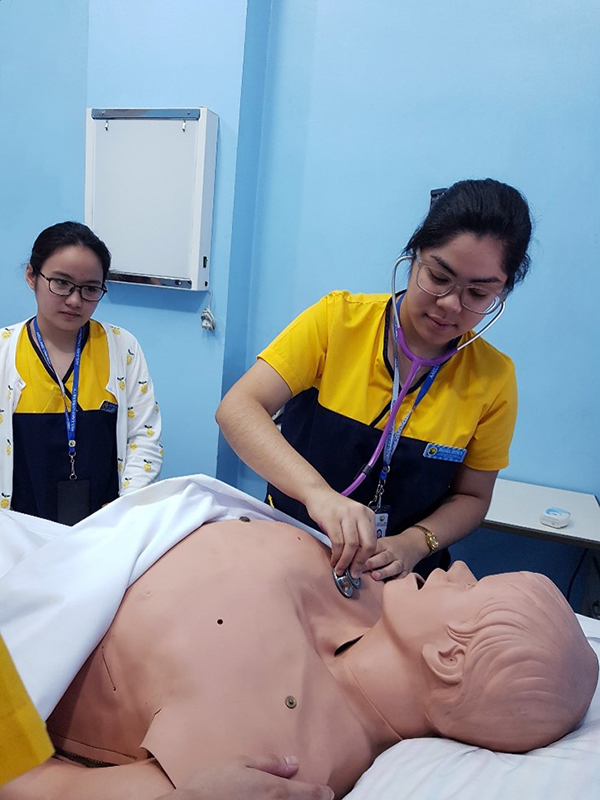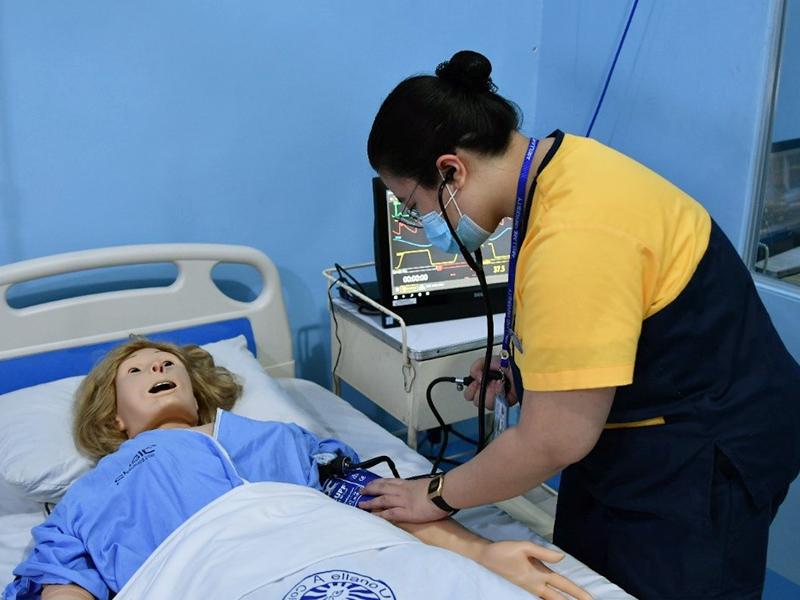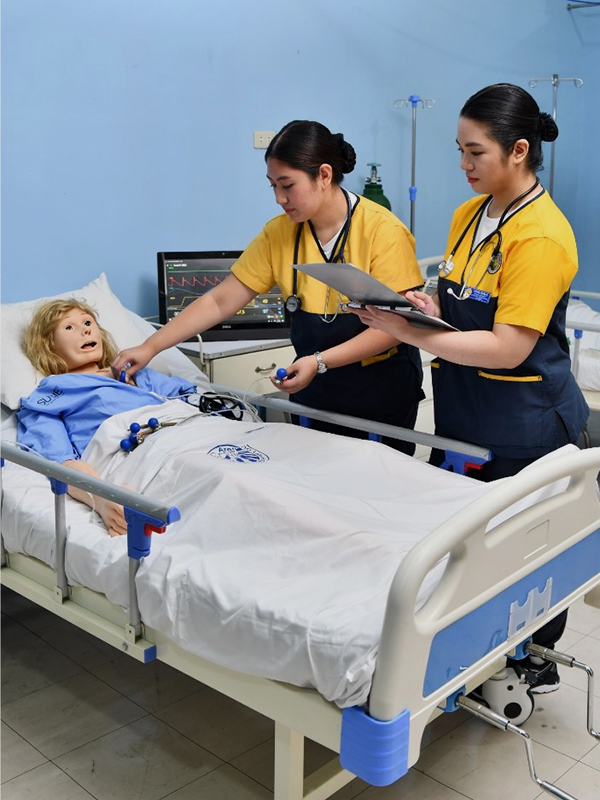The International Nursing Program developed a Virtual Clinical Application Program (VCAP) in accordance with the clinical simulation standards of Alderson-Broaddus University of Philippi, West Virginia, USA. The program is an innovative approach to the acquisition of knowledge and facilitation of learning, providing students with a safe and controlled environment where they can exhibit the required clinical skills and patient care with minimal risks and without compromising the health of a human patient. Instead of actual human patients and the usual dummies, the VCAP uses a cutting-edge, high-fidelity METI patient simulator categorized as an Emergency Care Simulator (ECS) mannequin that is anatomically accurate and has the capability to display various clinical signs. It displays realistic physiologic responses such as respiration, pulses, heart sounds, breath sounds, urinary output, and pupil reaction. The human physiology models at the core of the ECS provide appropriate and realistic responses to treatment interventions. It reacts to airway and oxygenation management, fluid administration, defibrillation, and drug administration. The reactions can be manipulated by the facilitators through the Human Patient Simulation software. Aside from this, the VCAP also utilizes a wireless and tetherless nursing patient care simulator called SUSIE, which is connected to a virtual monitor that provides real-time assessment and stimulates decision-making among students. Some of its features include multi-system assessment and nursing interventions such as eCPR sensors, preprogrammed speech responses, gynecology examinations, and programmable bowel and respiratory sounds.

The mannequins have interchangeable genitalia so that they can act as male or female patients. The gender transformation may be enhanced with the aid of a wig, cosmetics, and appropriate clothing. The mannequin can also be dressed up to present as a pregnant female with the appropriate props. It is possible to alter the appearance of the mannequin to represent a wide age range, from young adulthood to geriatrics.

The program is conducted at the INP Virtual Simulation Laboratory, which is divided into a simulation room and a control room. The simulation room houses the ECS, and it is where the students undergo the simulation exercise. Video cameras and audio recording equipment are installed in the simulation room for documentation purposes. An LCD monitor serves as a patient monitor display, indicating patient physiologic parameters.

The control room, or panel room, is where the facilitators can create scenarios through the use of HPS software. An LCD monitor serves as a patient monitor with a display of patient physiologic parameters. Microphones are installed in the control room and connected to audio equipment in the simulation room to facilitate communication and feedback during the simulation. Thus, the student’s experience of dealing with a patient becomes more realistic and multi-dimensional.
Besides the simulation laboratory, the VCAP also uses a conference room where the students observe their cohorts who are simulating through audio-visual equipment that connects the pre-conference room and the simulation room.
The simulation program is flexible and can be modified to suit the learning objectives and needs of the participating school. The participating school can choose to have their students go through a tour of the laboratory or a half-day, one-day, or two-day workshop. The VCAP is also offered to 3rd and 4th-year nursing students at the AU College of Nursing. It also allows educators to set multiple learning objectives that lead to a significant enhancement of the learners' competence and confidence. Learners are given the chance to get a feel of the critical care setup and test their reactions to clinical circumstances that are simulated in real-time. It is thus a highly effective preparation for actual clinical practice.